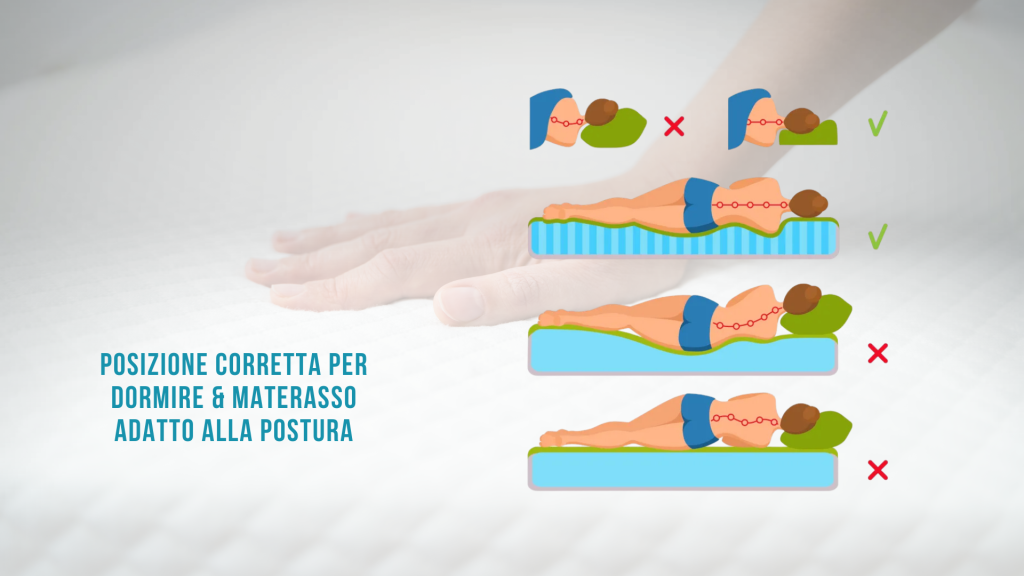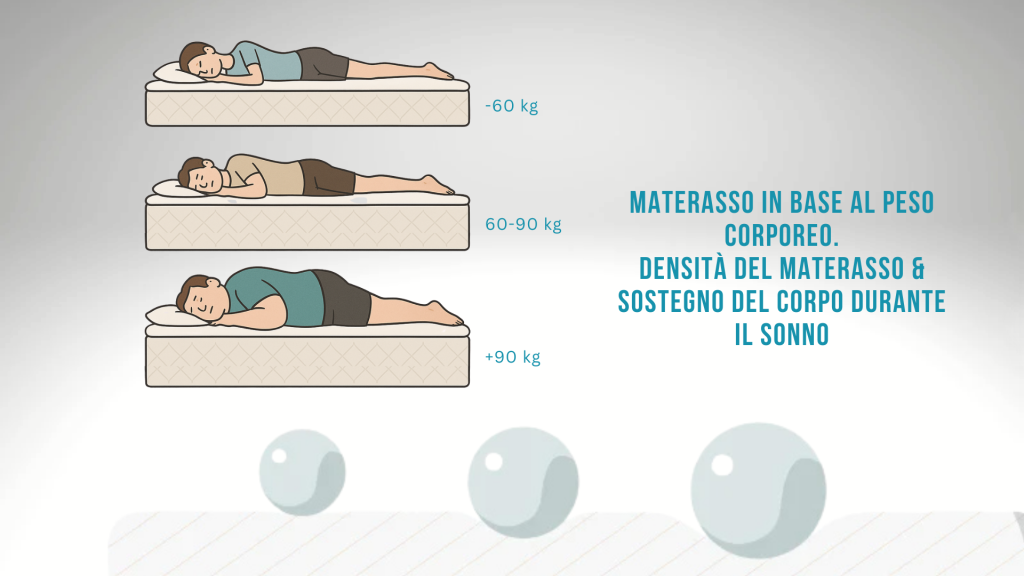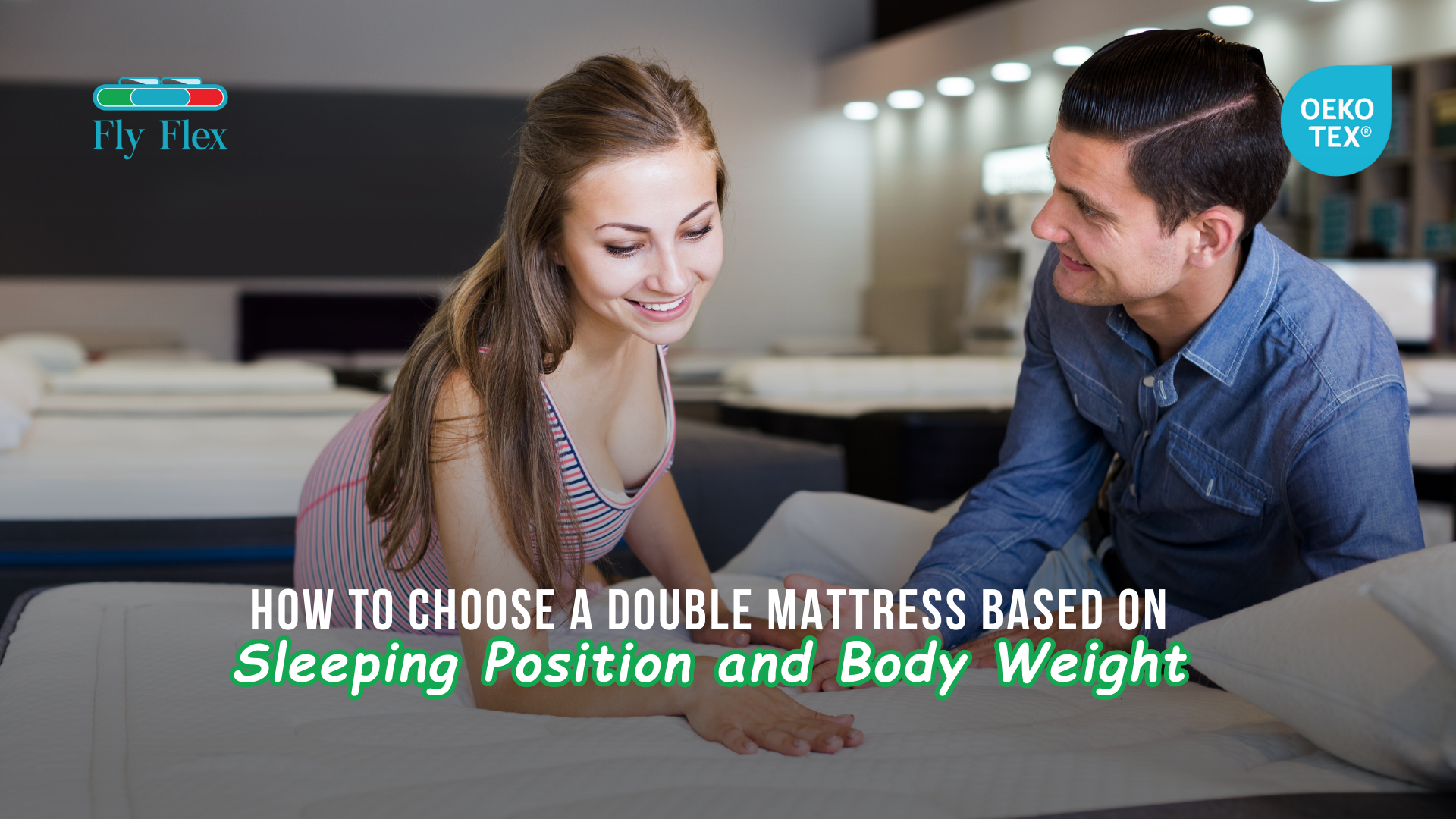Choosing the right double mattress is one of the most important decisions a couple can make for their daily well-being. It’s not just another purchase for the home—it’s an investment in spinal health, sleep quality, and the energy we bring to our days. Many people make their choice based solely on price or softness to the touch, but in reality, body weight and sleeping position play a much more decisive role than most think.
Think about those mornings when you wake up with back or neck pain—it’s often not “age” to blame, but the fact that your body has spent hours in an incorrect position, on a surface that doesn’t provide adequate support. Choosing a mattress that aligns with your sleeping habits and body weight can make the difference between restless nights and deep, restorative sleep.
In this guide, we’ll look at how to identify the most important factors for you and your partner, understand which technical features truly impact your body, and avoid the most common mistakes many buyers make. This will be a practical journey, based on real-life experiences, to help you turn your mattress purchase from a gamble into an informed decision.
Why Body Weight and Sleeping Position Are Key Factors
Body weight and sleeping position are two variables that directly influence the comfort, support, and durability of a double mattress. This isn’t just about personal preference—it’s about how your body interacts with the surface on which you spend about a third of your life.
Heavier individuals place greater pressure on the mattress, requiring materials with higher density and firmness to avoid sagging and maintain proper spinal alignment. On the other hand, lighter individuals may feel uncomfortable on a mattress that’s too firm, as it prevents the shoulders and hips from sinking in just enough to keep the spine naturally aligned.
Sleeping position is equally important: side sleepers need more give in certain areas compared to those who sleep on their backs or stomachs. For example, side sleepers benefit from a mattress that yields at the shoulders and hips while still supporting the lumbar area. Back sleepers, in contrast, need even weight distribution to prevent unnatural spinal curves.
Understanding how your body and your sleeping habits interact with a mattress is the first step toward making a truly informed choice. Without this analysis, even the most expensive model may fail to deliver the expected benefits.
Choosing a Mattress Based on Sleeping Position

The way you sleep directly impacts the type of double mattress that will give you a healthy, restorative night’s rest. There’s no universal solution—what works for a side sleeper may not suit someone who sleeps on their back or stomach.
- Side Sleepers
This position places pressure on the shoulders and hips. A mattress that’s too firm can cause numbness or joint pain, while one that’s too soft risks misaligning the spine. The ideal choice is a structure with zoned support and a layer of memory foam that relieves pressure points while keeping the lumbar area supported. - Back Sleepers
In this position, it’s crucial for weight to be evenly distributed, avoiding situations where the lower back is unsupported or the hips sink too much. A medium-firm mattress with good support helps maintain the spine’s natural curve without creating muscle tension. - Stomach Sleepers
This posture tends to strain the neck and lower back. Here, a firmer, more stable mattress helps prevent the torso from sinking and reduces neck twisting. - Combination Sleepers
For those who switch positions frequently, the best choice is a responsive mattress that adapts quickly to changes without creating pressure points. Hybrid structures or pocket spring models paired with memory foam often offer the right balance.
Knowing your dominant sleeping position—or your mix of positions—is essential to choosing a mattress that stays comfortable not just on the first night, but for years to come.
Choosing a Mattress Based on Body Weight

Body weight is one of the most underestimated factors when choosing a double mattress, yet it has a major impact on comfort and long-term support. A mattress that’s perfect for a lighter person can feel uncomfortable to someone heavier after only a few weeks.
- Under 60 kg (132 lbs)
Lighter individuals put less pressure on the mattress. An overly firm model can prevent the shoulders and hips from sinking properly, causing muscle tension. A mattress with a soft to medium feel, ideally with a layer of memory foam, provides adequate support without excessive pressure points. - 60–90 kg (132–198 lbs)
This weight range has more flexibility, but balance between comfort and support is still key. A medium-firm mattress made from quality materials with good density will help maintain spinal alignment and prevent premature sagging. - Over 90 kg (198 lbs)
Heavier individuals need a mattress with high firmness and dense materials to prevent excessive sinking and loss of alignment. Multi-layer constructions or reinforced pocket spring models are often the best choice, especially when paired with good breathability.
Choosing a mattress based on weight isn’t just about immediate comfort—it’s about preserving spinal health, reducing the risk of muscle pain, and ensuring your mattress lasts longer.
Other Factors to Consider
Weight and posture are essential, but they’re not the only things to consider when choosing a double mattress. Details that seem secondary at purchase time can become crucial after months of nightly use.
One is material: memory foam, latex, pocket springs, or hybrid solutions each feel different and respond uniquely to the body’s needs. Then there’s breathability, essential for those who overheat at night or live in warm climates—a mattress with good airflow helps regulate body temperature and reduces moisture buildup.
Hypoallergenic properties are another important factor, especially for allergy sufferers: certified covers and anti-dust mite materials can make a big difference over time. And don’t forget the warranty—a reputable brand offers at least 8–10 years of coverage, showing confidence in its product’s quality.
Lastly, ensure compatibility with your bed base: even the best mattress can lose performance if placed on an unsuitable foundation. Paying attention to this detail from the start helps avoid extra costs and future issues.
Comparison – Flyflex vs Other Brands in Real Scenarios
When it comes to mattresses, theory matters, but real-world experience is what truly reveals differences between a Flyflex model and many other brands on the market.
Take a couple who’ve been sleeping on a standard mattress for years: after a few hours of rest, one wakes with lower back pain while the other has sore shoulders. Switching to a Flyflex model with zoned support and high-density materials reduces pressure points, keeps the spine stable, and leads to lighter, more comfortable mornings.
Another case involves people who overheat at night: many low-cost mattresses trap heat, while Flyflex models with ventilation channels and breathable covers help disperse warmth, reducing sweating and improving sleep continuity.
This isn’t to say “Flyflex is always better”: there are quality competitors with similar features, but the difference often lies in long-term performance consistency. Some competitor models start to sag after 2–3 years, while Flyflex mattresses maintain support and comfort for much longer, backed by strong warranties and certified-quality materials.
In short, the added value lies in addressing real sleep problems without compromising on durability or functionality.
Test – What Type of Mattress Is Right for You?
Choosing a double mattress can seem complicated, but understanding your sleeping habits makes it much easier. Here’s a quick self-test: it’s not a substitute for professional advice, but it helps point you in the right direction.
1. What’s your usual sleeping position?
- Side: You need zoned support with softer cushioning for shoulders and hips.
- Back: Go for medium-firm support to keep your spine aligned.
- Stomach: Choose a firmer model to avoid torso sinkage.
2. What’s your body weight?
- Under 60 kg (132 lbs): Softer to medium mattresses avoid excessive pressure points.
- 60–90 kg (132–198 lbs): Wide choice, but balance between comfort and firmness is key.
- Over 90 kg (198 lbs): High-firmness, dense materials prevent sagging.
3. Do you overheat at night?
- Yes → Choose breathable models with ventilation channels.
- No → Focus on structure and comfort.
4. Do you have allergies?
- Yes → Opt for hypoallergenic, anti-dust mite covers.
- No → Washable covers still help maintain hygiene.
Answering these questions narrows your search and makes comparing models far easier and more targeted.
Choosing the right double mattress isn’t a matter of luck—it’s about understanding yourself and your needs. Body weight, posture, materials, breathability, and build quality are all factors that, when carefully considered, can radically transform your sleep quality and overall well-being.
A good mattress isn’t a luxury—it’s an investment in health, energy, and daily mood. Sleeping well means waking up without pain, facing the day with more focus, and enjoying the peace that only deep rest can bring.
If this guide has helped you understand your needs more clearly, the next step is to try a mattress that truly meets your criteria. You can request a free, personalized consultation to find the Flyflex model that’s perfect for your body weight, posture, and comfort preferences.
📞 Contact us now or fill in our short questionnaire: in just a few minutes, we can recommend your ideal mattress and guide you toward an informed choice for the best possible sleep.
Luca Ferrari (Torino, Piemonte)
Ho ordinato l'Optima Pro e sono soddisfatto. Il pagamento a rate è stato comodissimo, consigliato.
Sara Romano (Firenze, Toscana)
Il questionario è stato utile e semplice, ho trovato facilmente il materasso perfetto.
Luigi Greco (Napoli, Campania)
Ho scelto Optima Pro perché soffro di mal di schiena e devo dire che è stato un ottimo investimento.
Ilaria Parisi (Livorno, Toscana)
Servizio impeccabile, la consulenza gratuita è stata davvero utile.
Andrea Marini (Mantova, Lombardia)
Consegna rispettata nei tempi previsti, personale cordiale.
Federica Orlando (Taranto, Puglia)
Ordine semplice, spedizione puntuale, servizio clienti gentile. Tutto perfetto!
Antonio Esposito (Salerno, Campania)
Spedizione veloce e imballaggio perfetto. Ho preso lo Spine Comfort e lo consiglio a chi soffre di mal di schiena.

